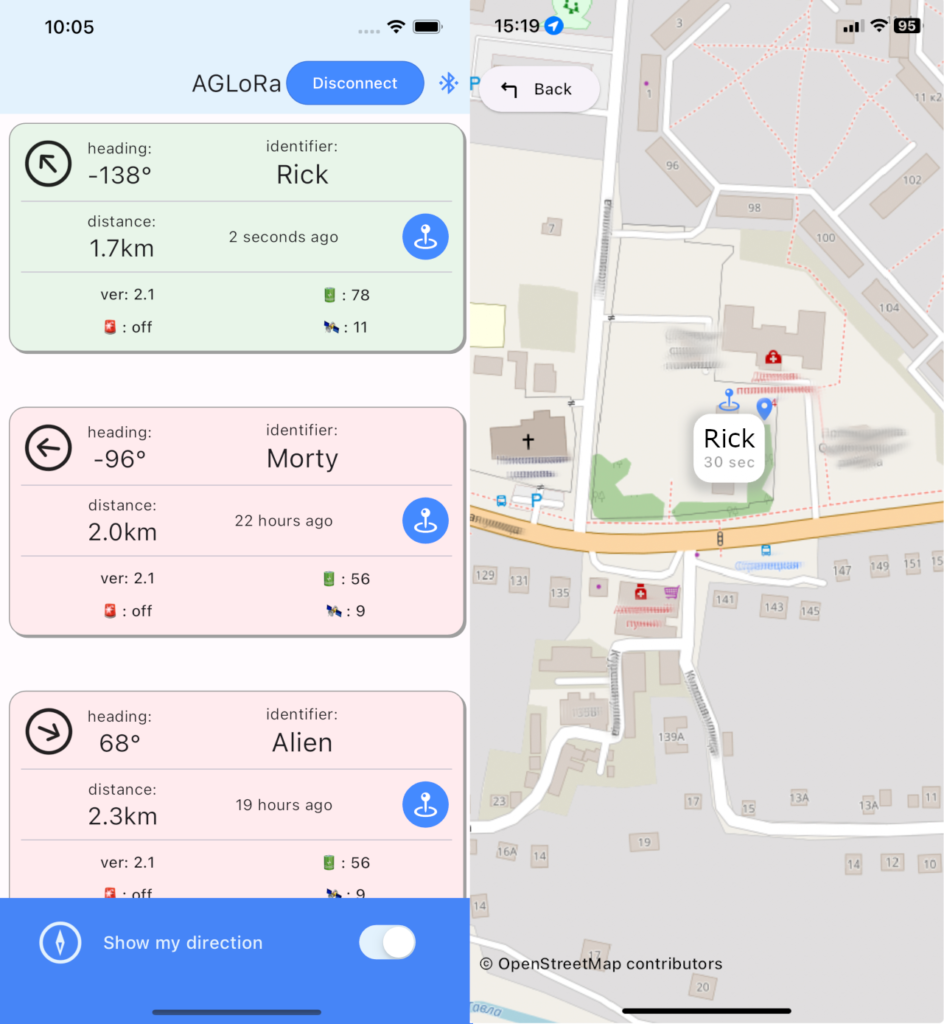AGLoRa is an acronym for “Arduino GPS LoRa”. Project is a simple open-source satellite tracking system for hiking, sailing, pet finding, and other outdoor activities. All components are widely available to buy online (aliexpress etc.).
The tracker receives the GPS coordinates from other trackers (via LoRa) and immediately transmits them to the phone app. By default the tracker sends its coordinates via LoRa every 10 seconds, when its GPS data is valid.
LoRa (from “long range”) is a proprietary low-power wide-area network modulation technique. https://en.wikipedia.org/wiki/LoRa
Components
- Arduino Nano or Arduino UNO (ATMEGA328P, not ATmega168)
- LoRa Module (EBYTE E220-900T22D (868 MHz), E433T30D (433 MHz))
- GPS Module (Generic)
- AT-09 (HM-10) Bluetooth Low Energy Module
- iOS or Android device
AGLoRa wiring.
The circuit is so simple, there are a few connections to be made. Step‐by‐step instructions.
Custom sensors
If you need you can add any sensors and then see its values in the application. To do this, just edit the section with the main data structure and the section with the protocol.
Links
GitHub: https://github.com/Udj13/AGLoRa
Wiki: https://github.com/Udj13/AGLoRa/wiki
Full project (C++, PlatformIO): https://github.com/Udj13/AGLoRa-full/
Mobile client (Dart, Flutter): https://github.com/Udj13/AGLoRa-client-flutter
AGLoRa app

Mobile client is an open source app – https://github.com/Udj13/AGLoRa-client-flutter
Android: download and install last version from releases
iOs: install from AppStore
